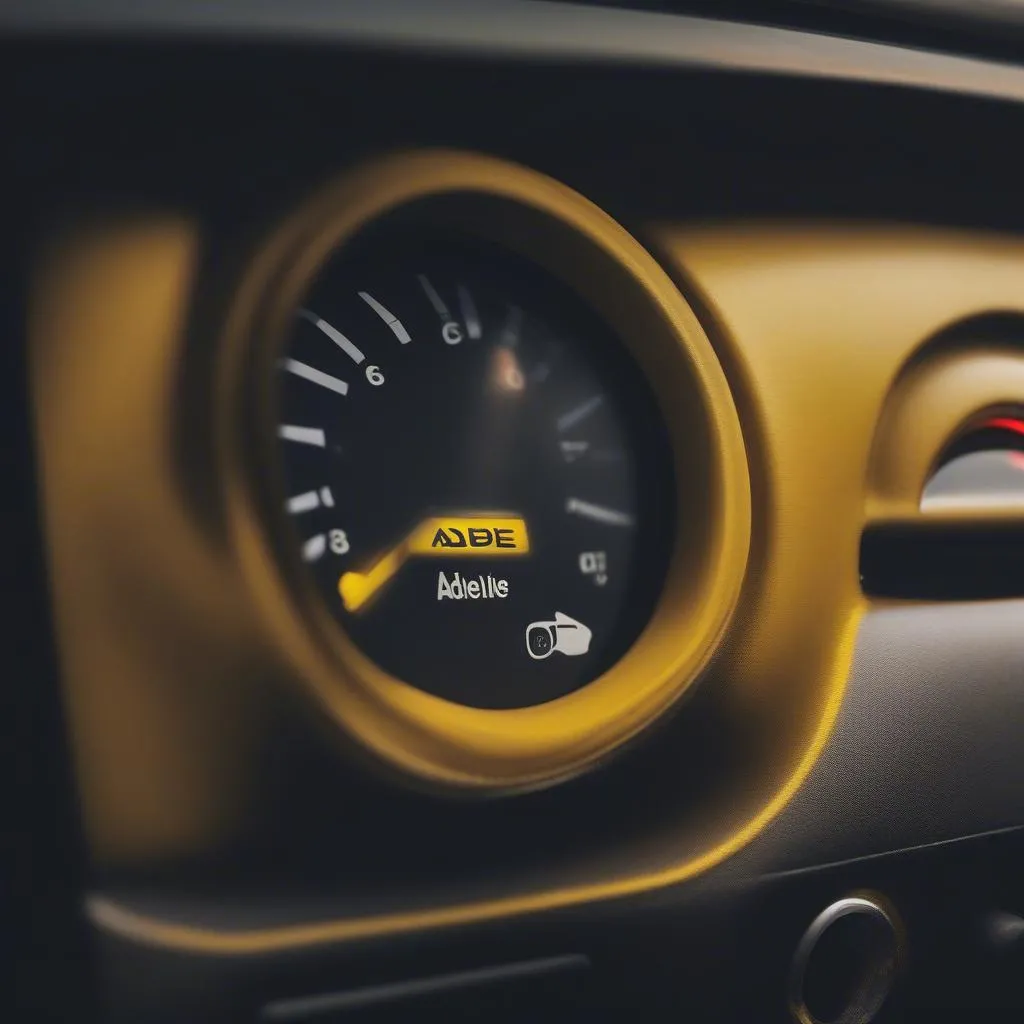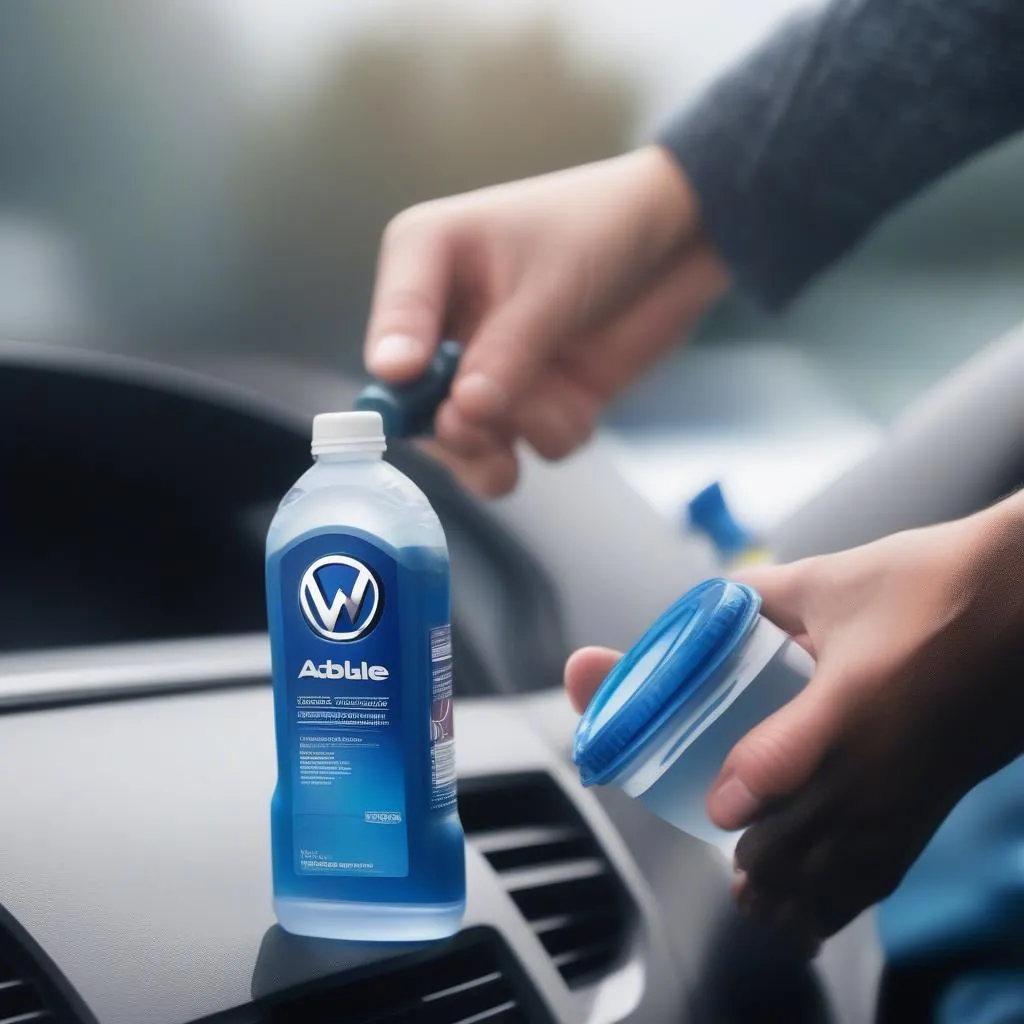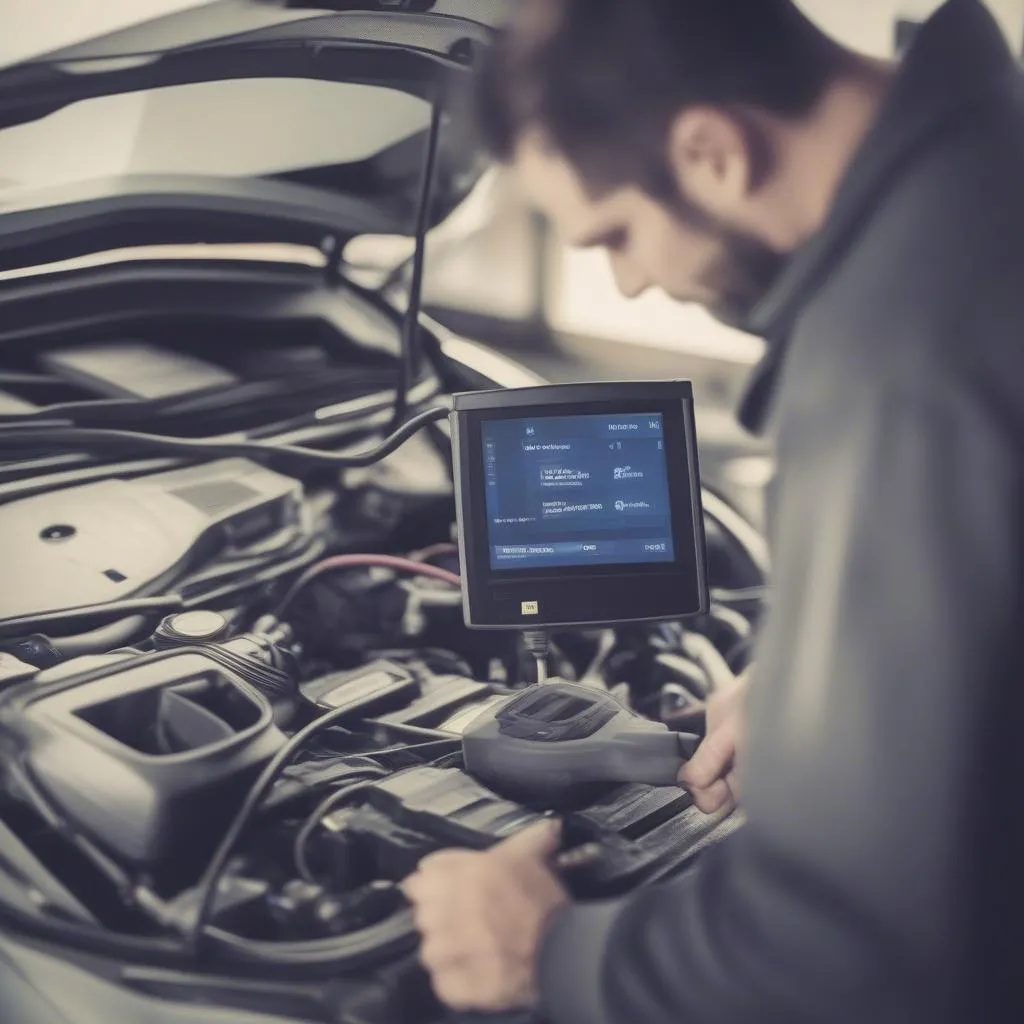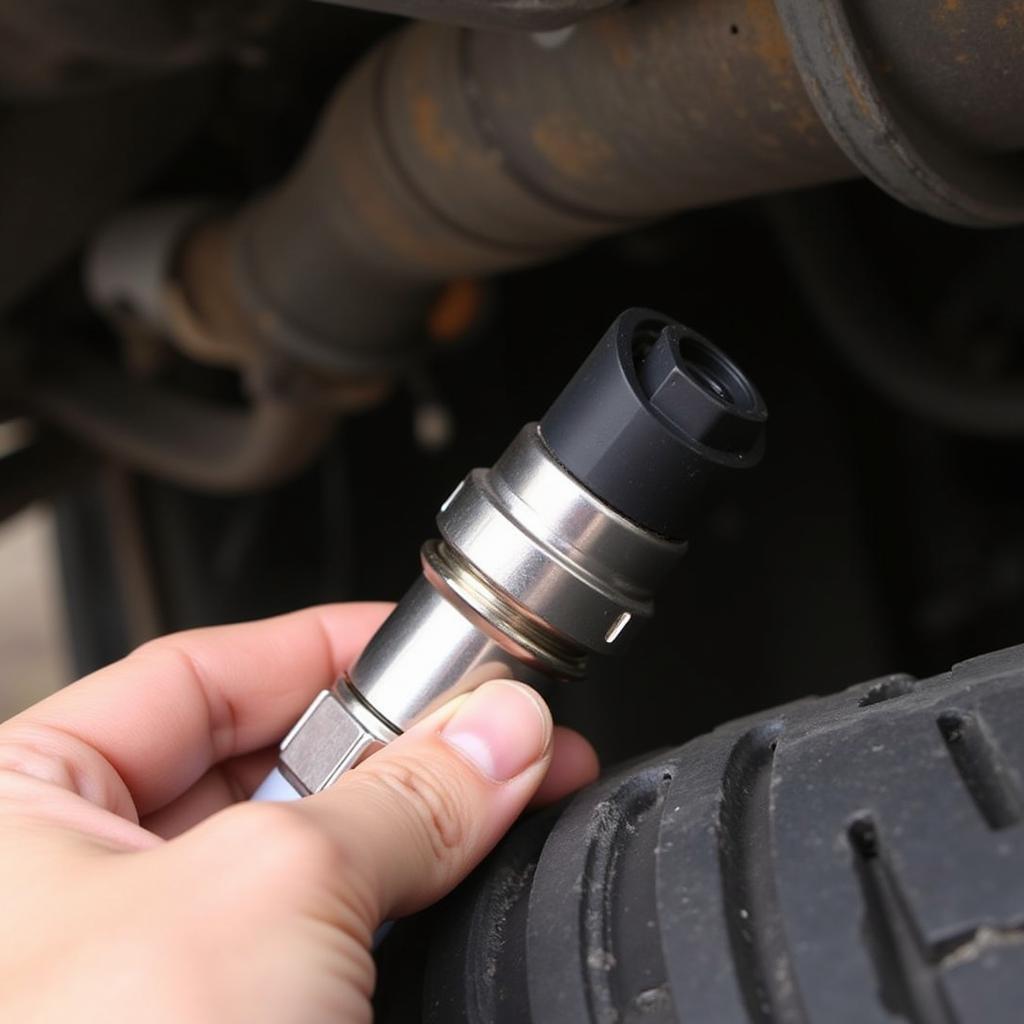Seeing an AdBlue warning light on your dashboard can be frustrating, especially if you’re driving a Volkswagen Passat. But don’t worry, it’s a relatively common issue and can often be resolved without a trip to the mechanic. This guide will walk you through the steps on how to reset the AdBlue warning on your Passat, helping you get back on the road quickly.
Understanding AdBlue and Why It Matters
AdBlue, also known as Diesel Exhaust Fluid (DEF), is a non-toxic solution that helps reduce harmful emissions from your Passat’s diesel engine. It’s injected into the exhaust system, where it breaks down nitrogen oxides (NOx) into harmless nitrogen and water vapor.
When your Passat’s AdBlue level gets low, the warning light illuminates to alert you. If you continue to ignore this warning and the AdBlue tank runs dry, your Passat may not start.
Identifying the AdBlue Warning on Your Passat
Typically, the AdBlue warning light will be a yellow or amber icon resembling a gas pump with a fluid droplet next to it, or the word “AdBlue” itself. It might also be accompanied by a message on your dashboard display.
 AdBlue Warning Light
AdBlue Warning Light
What You’ll Need
Before you begin the reset process, gather the following:
- Diagnostic Scanner (optional): This can help pinpoint the exact cause of the warning and clear more complex errors. Products from Cardiagtech, for instance, can provide comprehensive diagnostic capabilities for your Passat.
- AdBlue Fluid: Ensure you use the correct fluid specified for your Volkswagen Passat.
 AdBlue Fluid Bottle
AdBlue Fluid Bottle
Steps to Reset AdBlue Warning on a Passat
Here are the general steps to reset the AdBlue warning on most Passat models. Keep in mind that slight variations may exist depending on the model year and specific system.
-
Check AdBlue Fluid Level: The first step is to ensure you have sufficient AdBlue fluid. If it’s low, top it up to the recommended level. You can purchase AdBlue fluid from most gas stations or auto parts stores.
-
Attempt a Drive Cycle: Sometimes, simply adding AdBlue and driving your Passat for a short distance can resolve the warning.
-
Manually Reset Using the Instrument Cluster (Model Specific): Some Passat models allow you to reset the AdBlue warning through the instrument cluster. You can usually find the reset option within the vehicle settings or service menu. Consult your owner’s manual for specific instructions.
-
Use a Diagnostic Scanner: For a more thorough approach, connect a diagnostic scanner to your Passat’s OBD-II port (usually located under the dashboard on the driver’s side). Follow the scanner’s instructions to read and clear the AdBlue warning code.
 OBD2 Port Scanner
OBD2 Port Scanner
FAQs About AdBlue Warnings and Passat
Q: Can I drive my Passat with the AdBlue warning light on?
A: Yes, you can typically drive for a certain distance with the warning light on. However, it’s crucial to address the issue promptly. Ignoring the warning for extended periods can lead to the engine entering a “limp mode” or even prevent the car from starting.
Q: How often do I need to refill AdBlue in my Passat?
A: The frequency of AdBlue refills varies depending on your driving habits and the specific Passat model. Generally, you’ll need to refill it every 5,000 to 10,000 miles.
Q: What if the AdBlue warning doesn’t reset after trying these steps?
A: If the warning persists after following these steps, it indicates a potential issue beyond a simple refill or reset. This could be due to a faulty AdBlue sensor, a problem with the AdBlue injector, or other system malfunctions. In this case, it’s best to consult a qualified mechanic or your Volkswagen dealership for diagnosis and repair.
Need Further Assistance?
CARDIAGTECH offers various diagnostic scanners and resources that can help you resolve AdBlue warning issues on your Volkswagen Passat. Visit our website or contact us today for more information.

